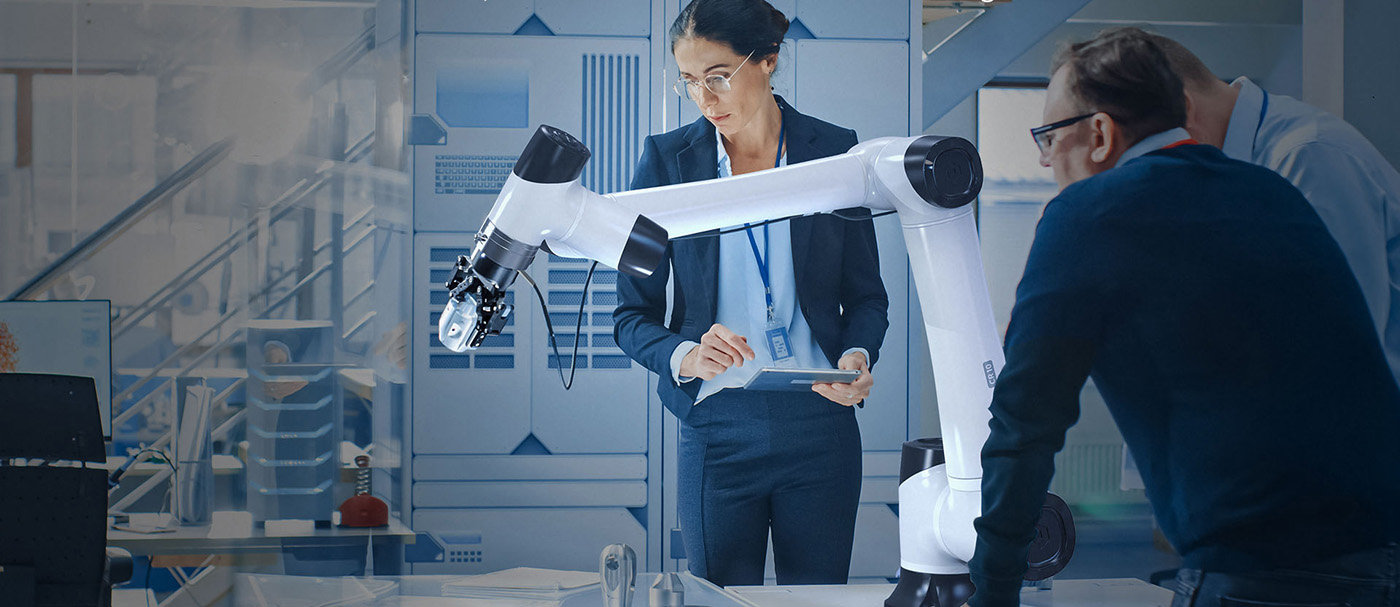DOBOT COBOT CR10S
Collaborative industrial robot arm with SafeSkin accessory
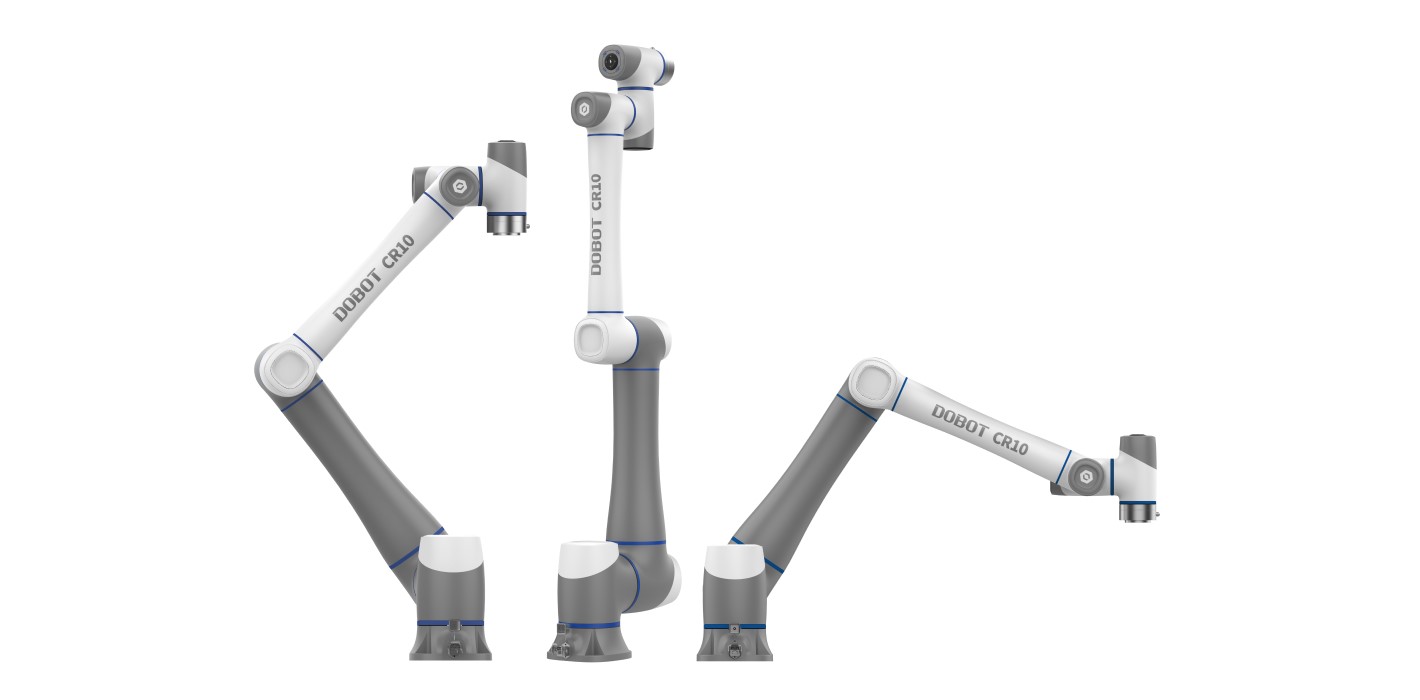
CR10S is the key to safe human-robot collaboration. Designed with the DOBOT SafeSkin add-on, the CR10S robotic arm is designed to simplify automation lines and provide a high level of safety for humans.
The Dobot CR10S is a mid-size industrial cobot with a compact size and 10kg load capacity, allowing a wide range of production automation with the robotic arm. It is available with a wide range of end tools and applications, making it an extremely useful tool for all areas of industry. It is also an excellent tool for vocational training, higher education, warehousing, production simulation and many other applications.
FLEXIBLE INSTALLATION, FAST IMPLEMENTATION
Improve workflow flexibility and production efficiency with an easy-to-deploy CR collaborative robot that can be set up in just 20 minutes and up and running in up to 1 hour. After connecting the control console and attaching the robot arm, you simply connect the two devices and switch on the system.
EASY TO ACCESS, EASY TO LEARN
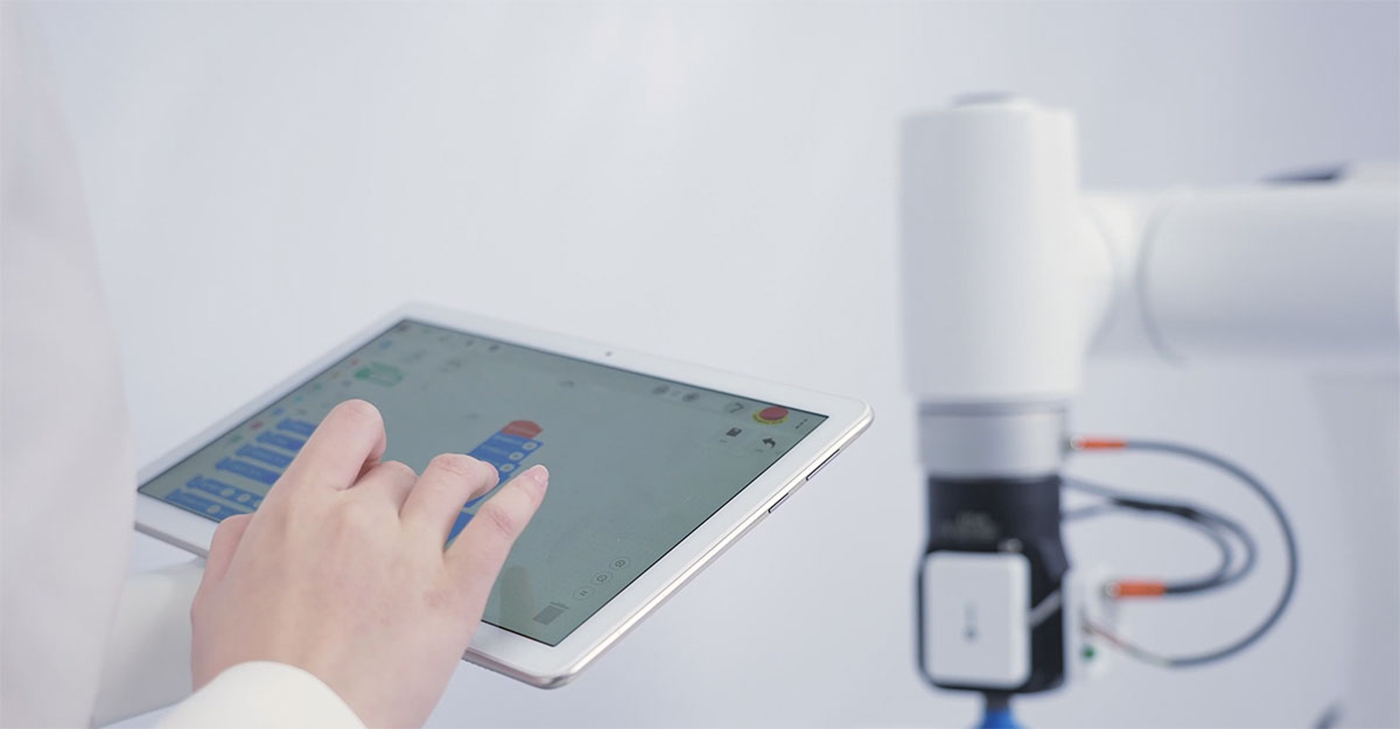
Dobot's software and arithmetic technology make the CR series of collaborative robots smart and easy to operate and manage. Thanks to software and manual training, it can accurately mimic human movements. No programming skills are required. This is facilitated by its block-based development environment, which eliminates the need to learn to use complex programming library systems and functions.
In case you have prior programming knowledge, the robot system supports the Python programming language, so you can take full advantage of the robot.
SafeSkin technology - Harnessing electromagnetic induction
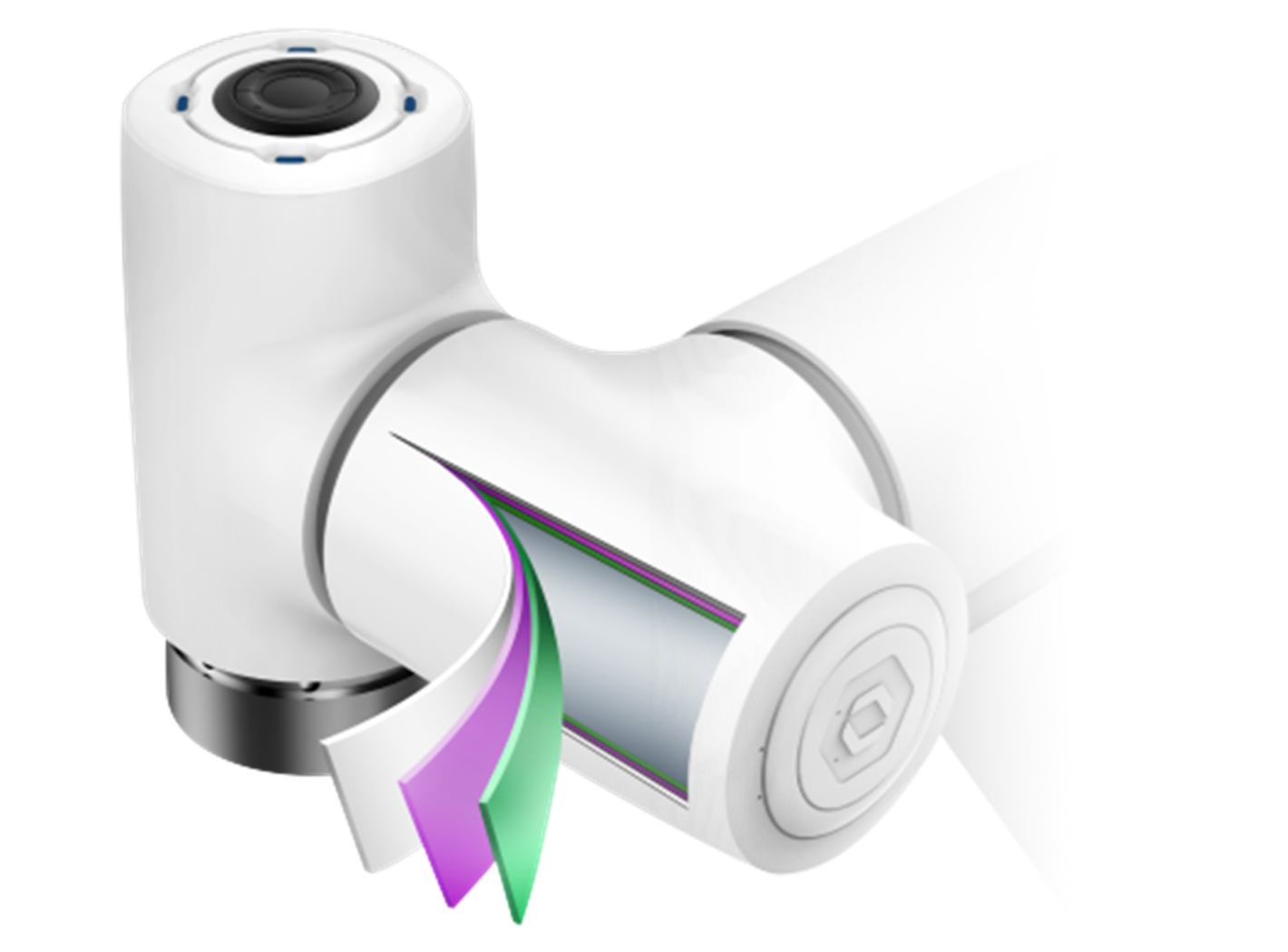
DOBOT's proprietary safety development that allows the robotic arm not only to prevent accidents, but also to avoid them. Using electromagnetic induction, a silicone cover with sensors ensures the robot is aware of its surroundings. The envelope creates an electromagnetic field along the robot's envelope, which is refracted by any foreign object in its environment or moving around it, causing the sensor to send a signal to the robot's central processing unit. This causes the robot to stop immediately.
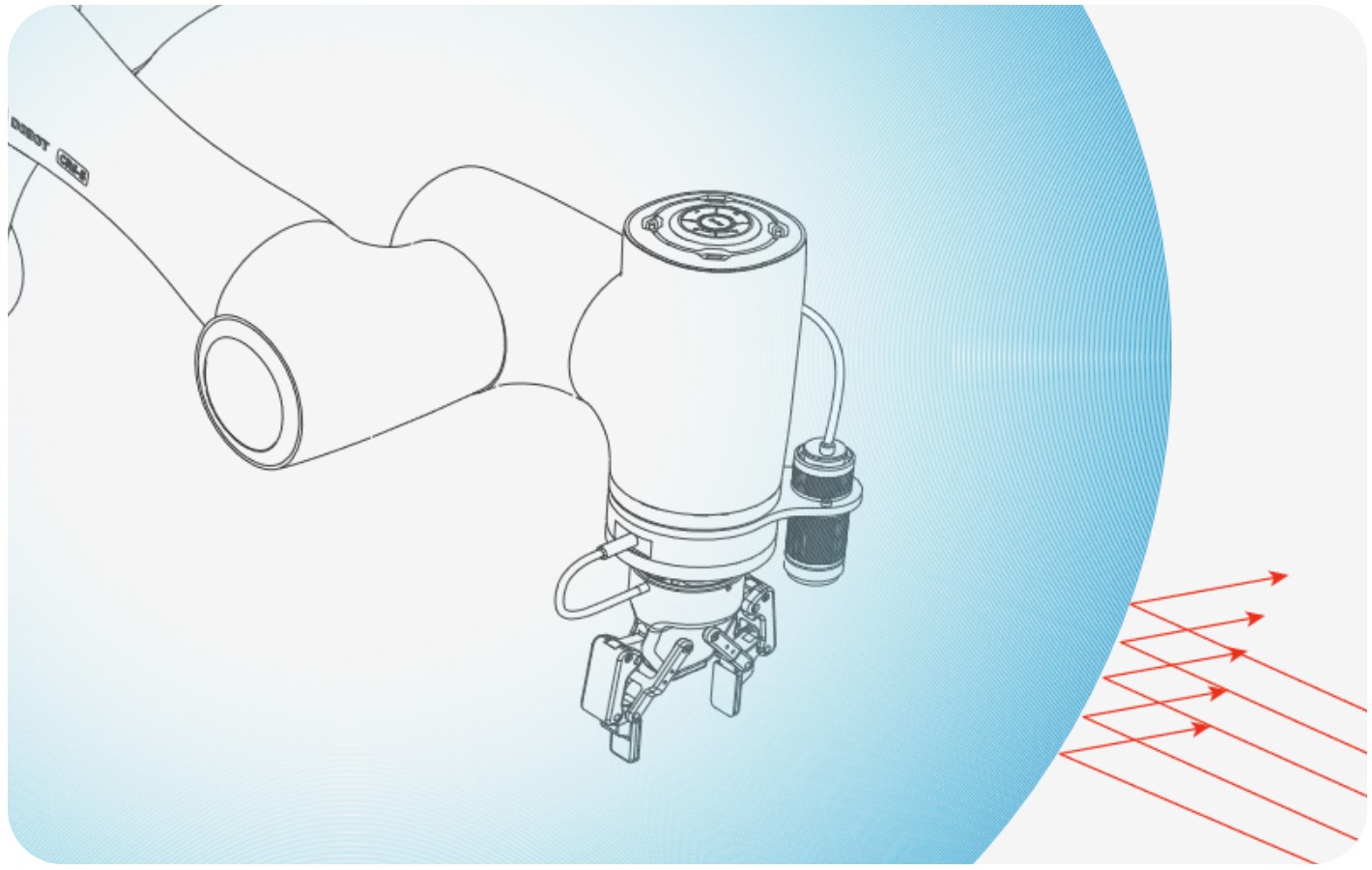
Its operation is suspended until the integrity of the magnetic field is restored, i.e. until the foreign object leaves the robot's immediate environment. Once its path of operation is free again, the robot automatically resumes its work without endangering the production process.
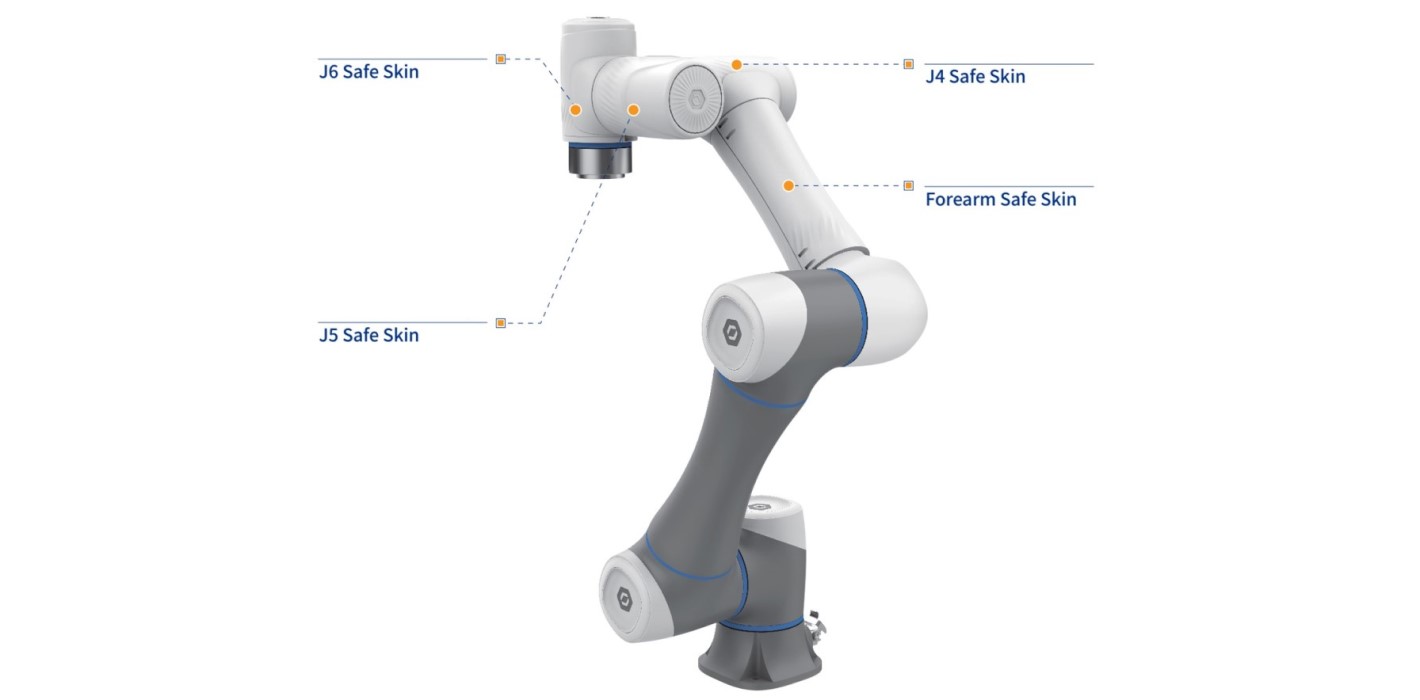
The SafeSkin package includes 4 units of cover. The forearm cover, the J4 wrist cover, the J5 wrist cover and the J6 joint cover.
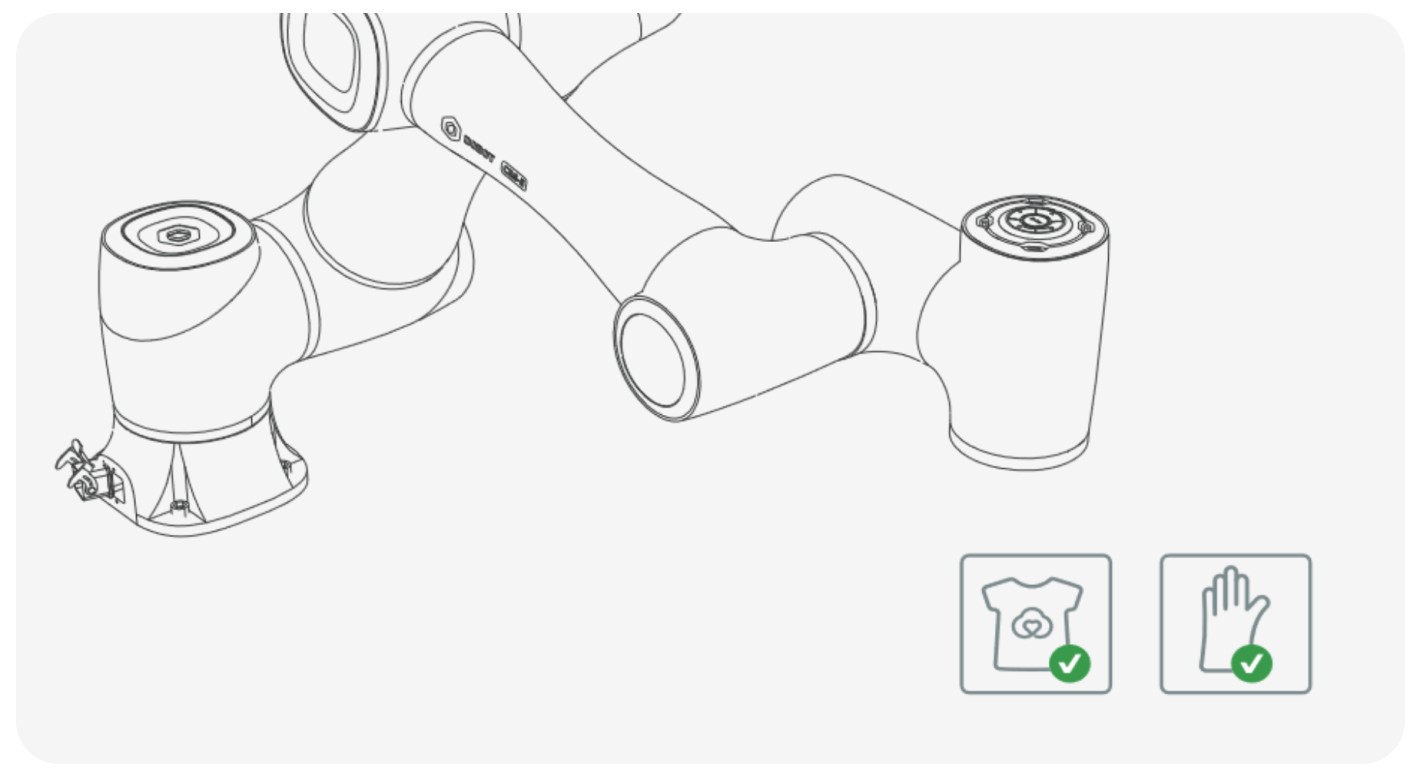
Sensitivity also varies according to the different materials. While human skin is at the highest level (coverings are the most sensitive), plastic is the lowest. Parameters related to prevention, such as acceleration and speed, can be set in the robot's development software.
Expandable, compatible
The CR collaborative robot series is also recommended for its universal communication interfaces, in addition to the wide range of end tools. Featuring multiple I/O and communication interfaces, the CR cobot series is widely expandable and compatible with a wide range of end-of-arm devices. As a result, CR cobots can meet a wide range of needs and can be used in a variety of application situations.
Parameters
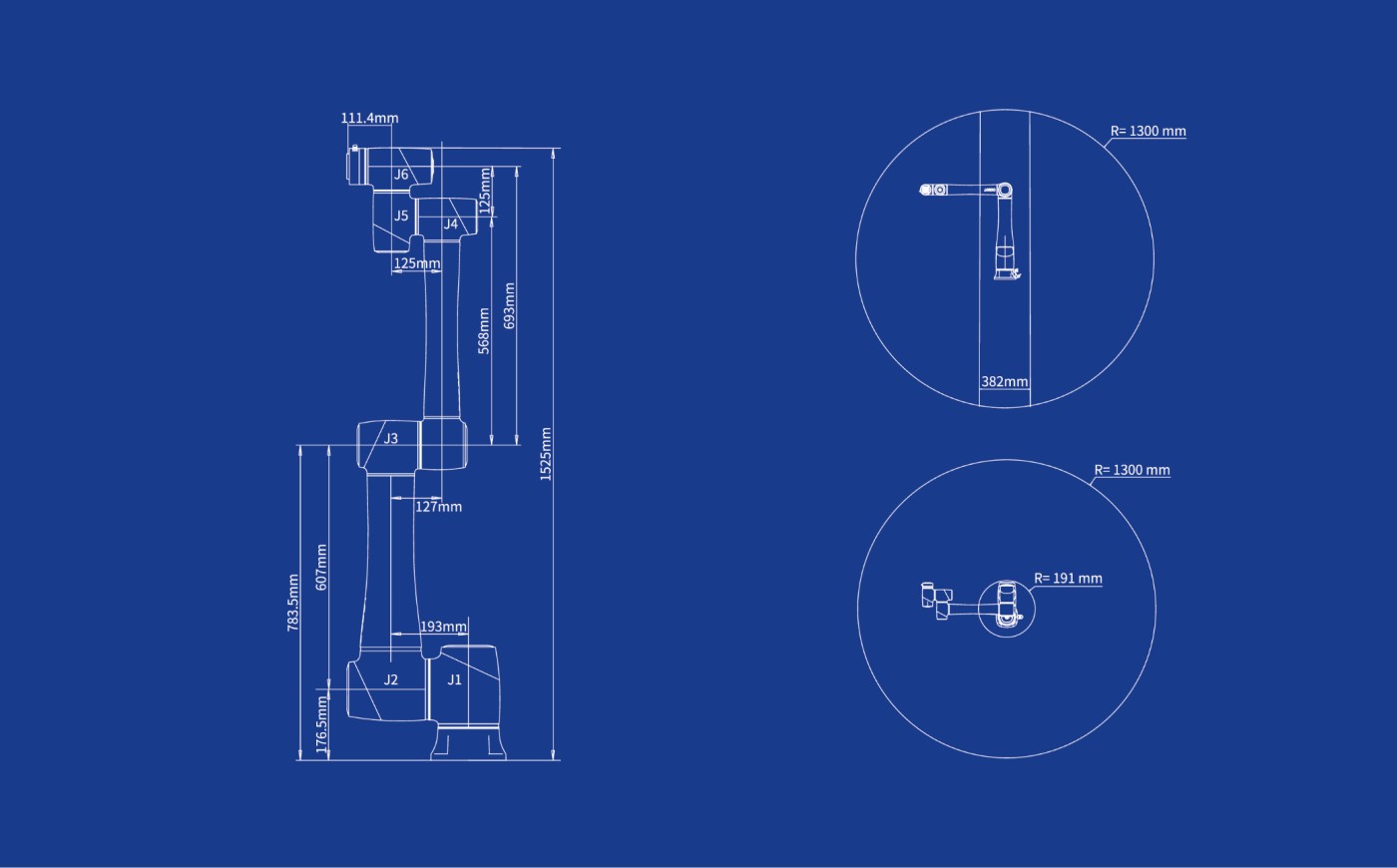
Product name | DOBOT CR10S |
Weight | 40kg |
Max Workload | 10kg |
Max Working Radius | 1525mm |
Rated Voltage | DC48V |
Max speed of End-Tool (TCP) | 4m/s |
Range of Joints | J1 | ±360° |
J2 | ±360° |
J3 | ±160° |
J4 | ±360° |
J5 | ±360° |
J6 | ±360° |
Max speed of Joints | J1/J2 | 120°/s |
J3/J4/J5/J6 | 180°/s |
End-Tool I/O interface | DI/DO/AI | 2 |
AO | 0 |
Kommunication interface | Communication | RS485 |
Controller I/O | DI | 16 |
DO/DI | 16 |
AI/AO | 2 |
ABZ Incremental Encoder | 1 |
Repeated accuracy | ±0.03mm |
Kommunication | TCP/IP, Modbus, EtherCAT,WIFI |
IP Rating | IP54 |
Working temperature | 0~45° |
Power | 350W |
Materials | Aluminum alloy, ABS plastic |
End-Tools
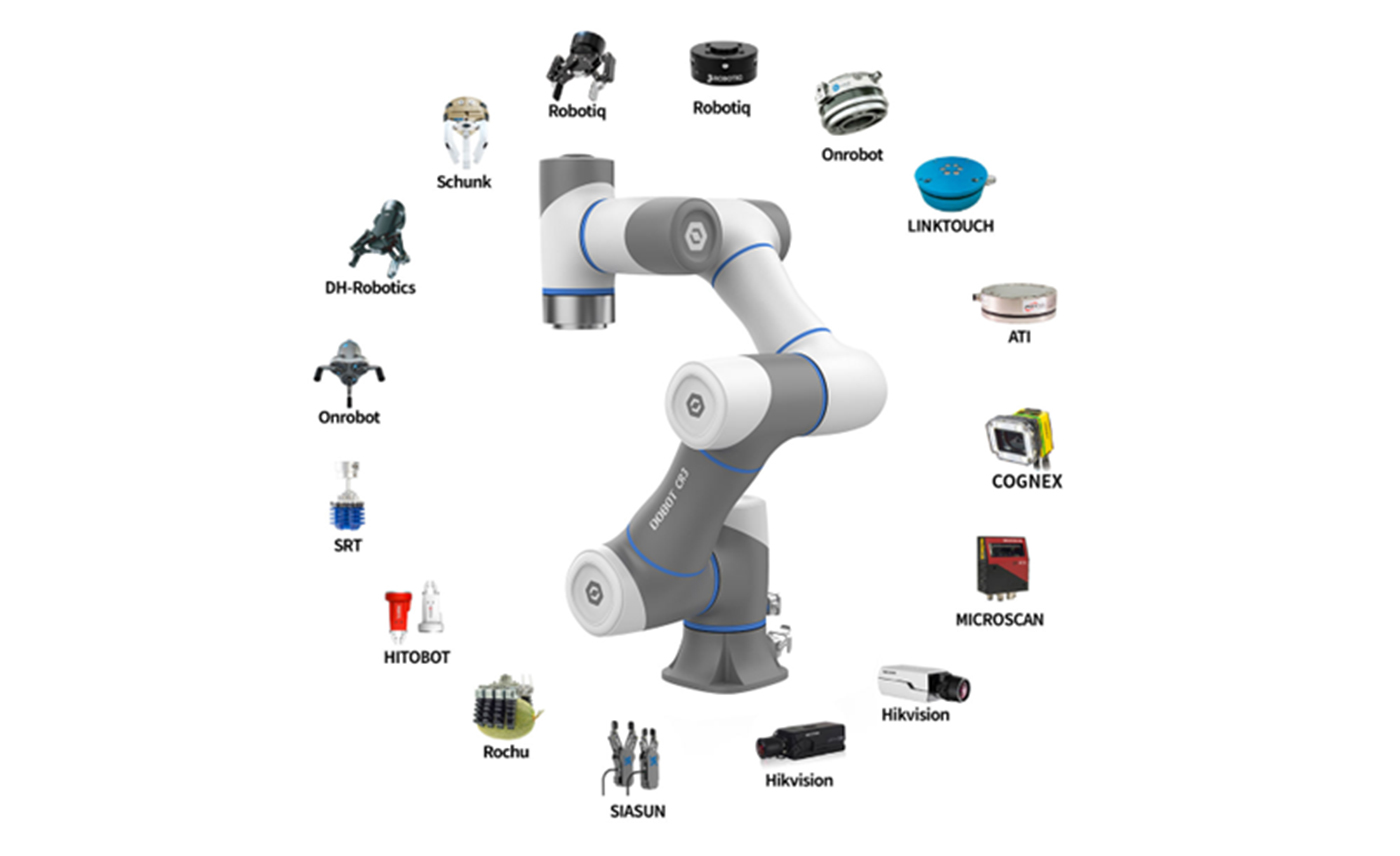
End tools are the devices that can be mounted on the ends of the robot arms. The DOBOT CR collaborative robot series is compatible with a wide range of end tools, so it will be able to meet even the most specific needs of your business. Whether it's welding, palletising, loading, bolting, sorting, assembly or quality control, any process can be equipped with vacuum or electronically powered grippers, MODBUS units for communication and automation, or conveyor and visual unit accessories to maximise the robot arm's efficiency, such as:
- Packing and palletising
- Handling
- Polishing
- Screwing
- Gluing, feeding and welding
- Assembly
- Machine handling
- CNC
- Quality control
- Injection moulding
Content of package
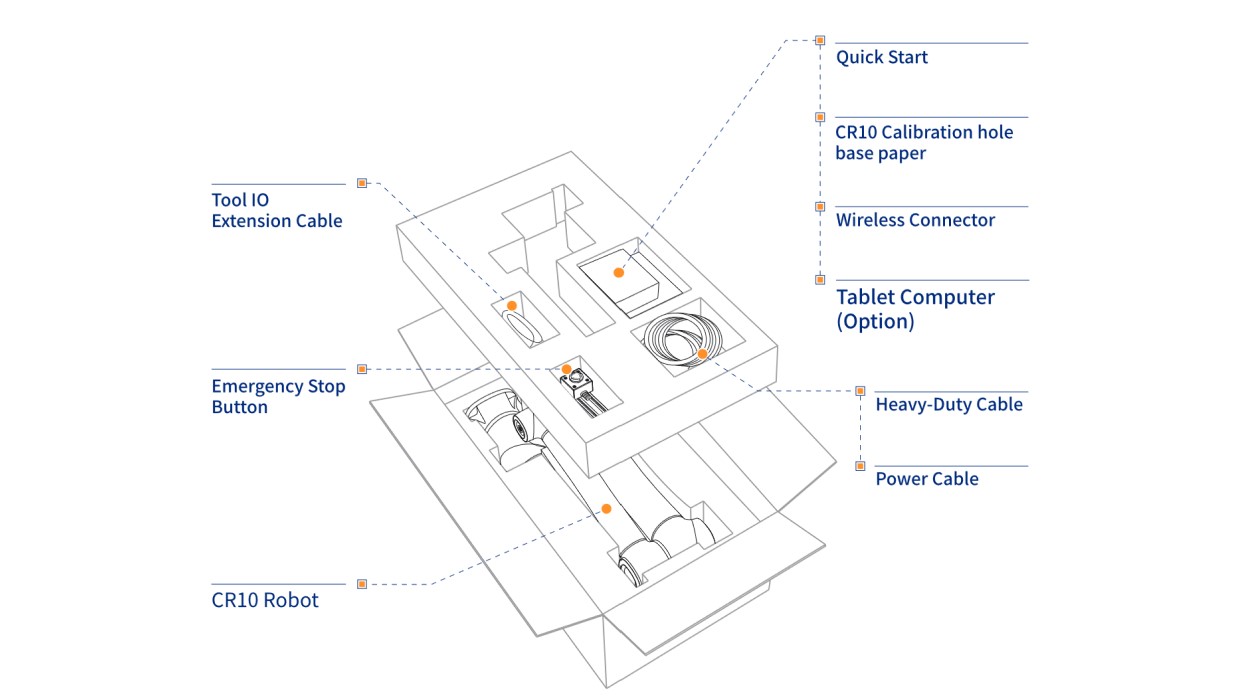
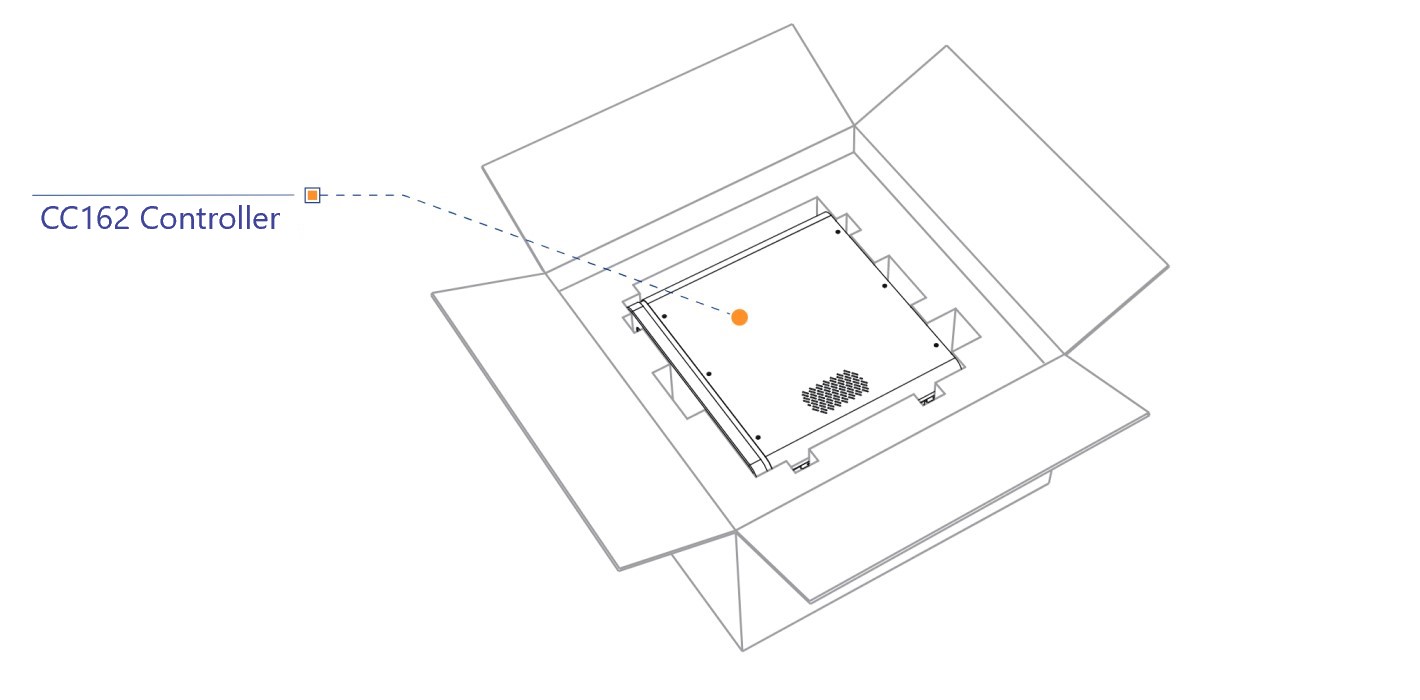
The robot arm consists of two units. A robot arm and a control unit for programming it. The controller unit is a computer that communicates with the robot arm and controls it. The controller has the IO ports to which the various accessories can be connected, including the emergency stop switch. To establish communication with your computer or smart device, the controller has a USB port to connect the WIFI module, and an Ethernet port if you want to control and program your robot arm via a wired connection.
*Pressing the emergency stop switch will stop the robot immediately. In addition to the two units, the package includes the power cables for the units and the IO cable for the connection.
The SafeSkin supplement is also included in the package!
Ways to move the robot arm
The robot arm can move from point A to point B by connecting two coordinate points in 4 modes:
Joint Interpolated Motion: the motion can be implemented using GO and MoveJ, which allows the robot arm to reposition from point A to point B by interpolating the joint angle of the robot arm without taking into account the position of the end tool
Linearly Interpolated Motion: The motion can be implemented by Move, which allows the robot to link the coordinates of point A and point B, looking at the position of the sky, which guides the end tool in a straight line. In the case of linear motion, a distinction can be made between the use of the jump mode, where the end tool either moves the two coordinate points to their end positions or applies a rounding off to the coordinates of the point to perform a continuous motion.
ARC -Circular Interpolated Motion: The robot connects points A and B along an arc by means of an auxiliary point C, thus performing an arc motion taking into account the position of the end tool
Circle - Circular Interpolated Motion: the robot moves in a circular motion by connecting points A and B with an auxiliary point C, taking into account the position of the end tool
Coordinate systems
The coordinate system of the robotic arm system is divided into four coordinate systems:
Base coordinate system: the base coordinate system defines the coordinates, position and motion of the end tool, based on the base coordinate system, which is defined by the Cartesian coordinate system.
Joint coordinate system: The joint coordinate system is defined by the possible movements of each joint
End-tool coordinate system: Coordinate system defining the offset distance and rotation angle, whose origin and orientations vary depending on the position of the workpiece on the robot table
User Coordinate System: A movable coordinate system used to represent equipment such as fixtures, workbenches. The orientation of the origin and axes can be determined based on site requirements, to measure point data within the work area and to conveniently arrange tasks
Singularity points
When the robot is moving in the Cartesian coordinate system, the resulting velocity of the two axes cannot be in either direction if the directions are in line, which results in the robot's degrees of freedom being degraded. The robot has three singularity points.
Safe investment, outstanding reliability
The robust and stable build quality of the CR series of collaborative robot arms promises a lifetime of up to 32,000 hours, combined with low running costs. This makes the CR series not only a safe investment, but also a return on investment.
